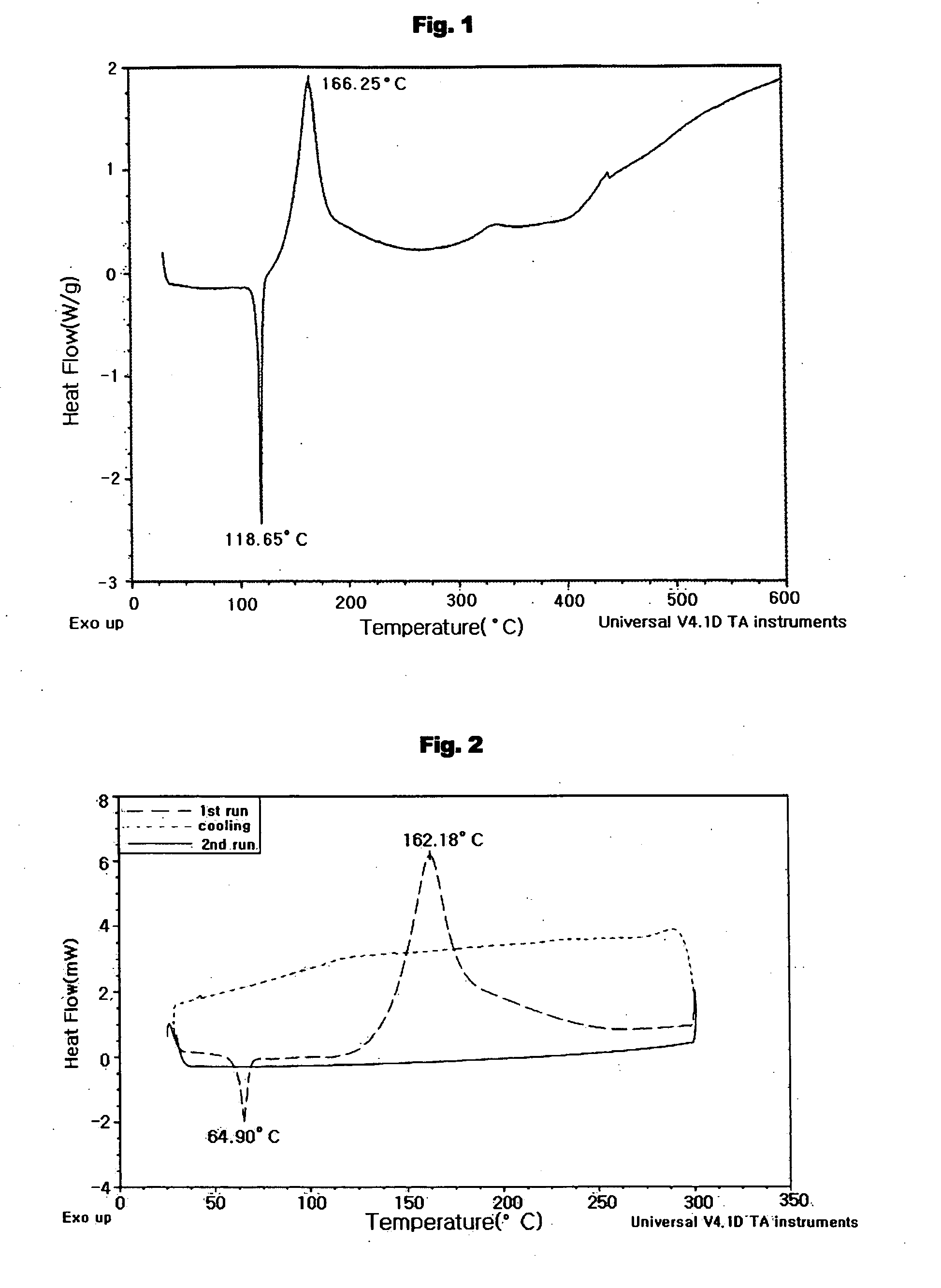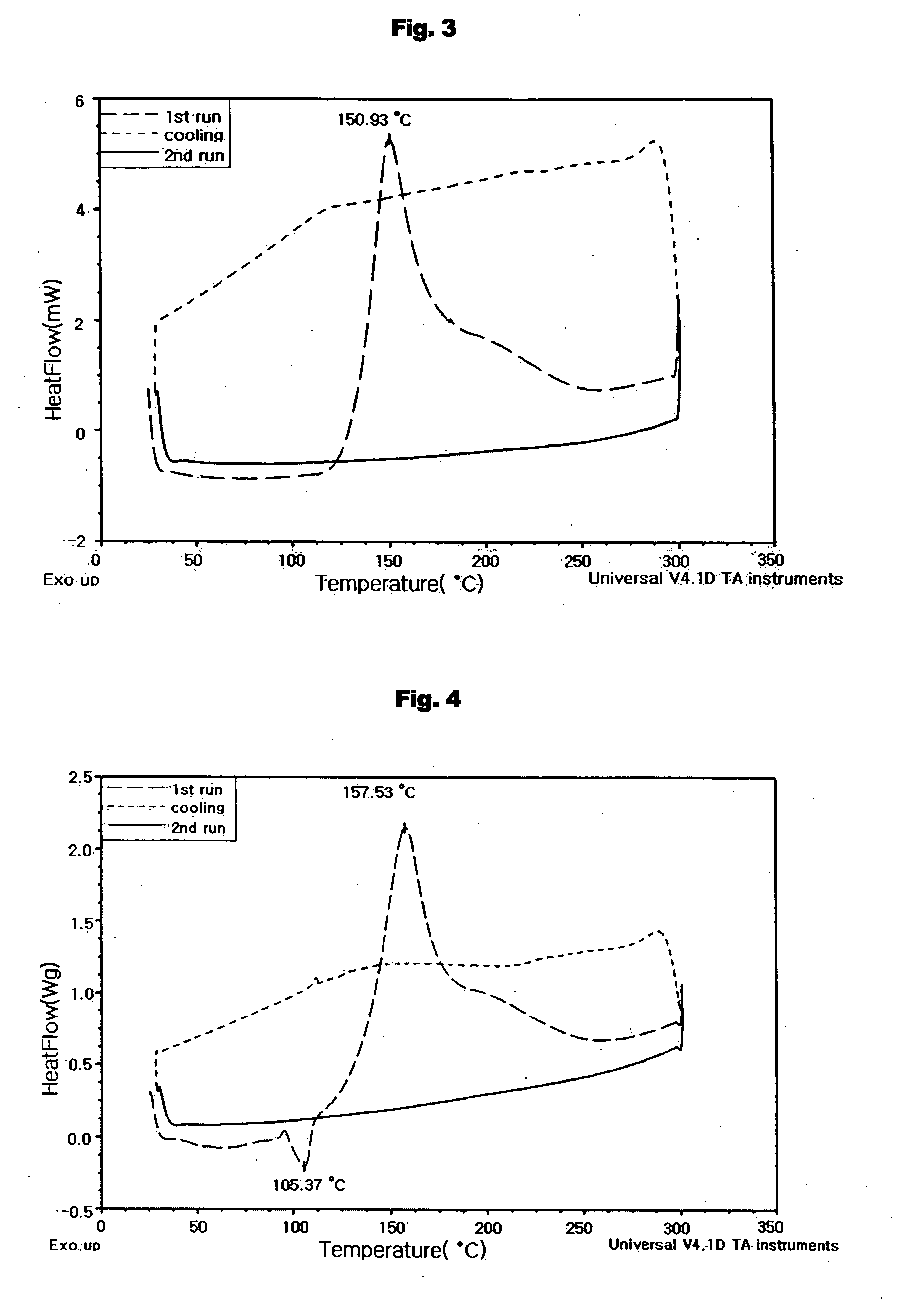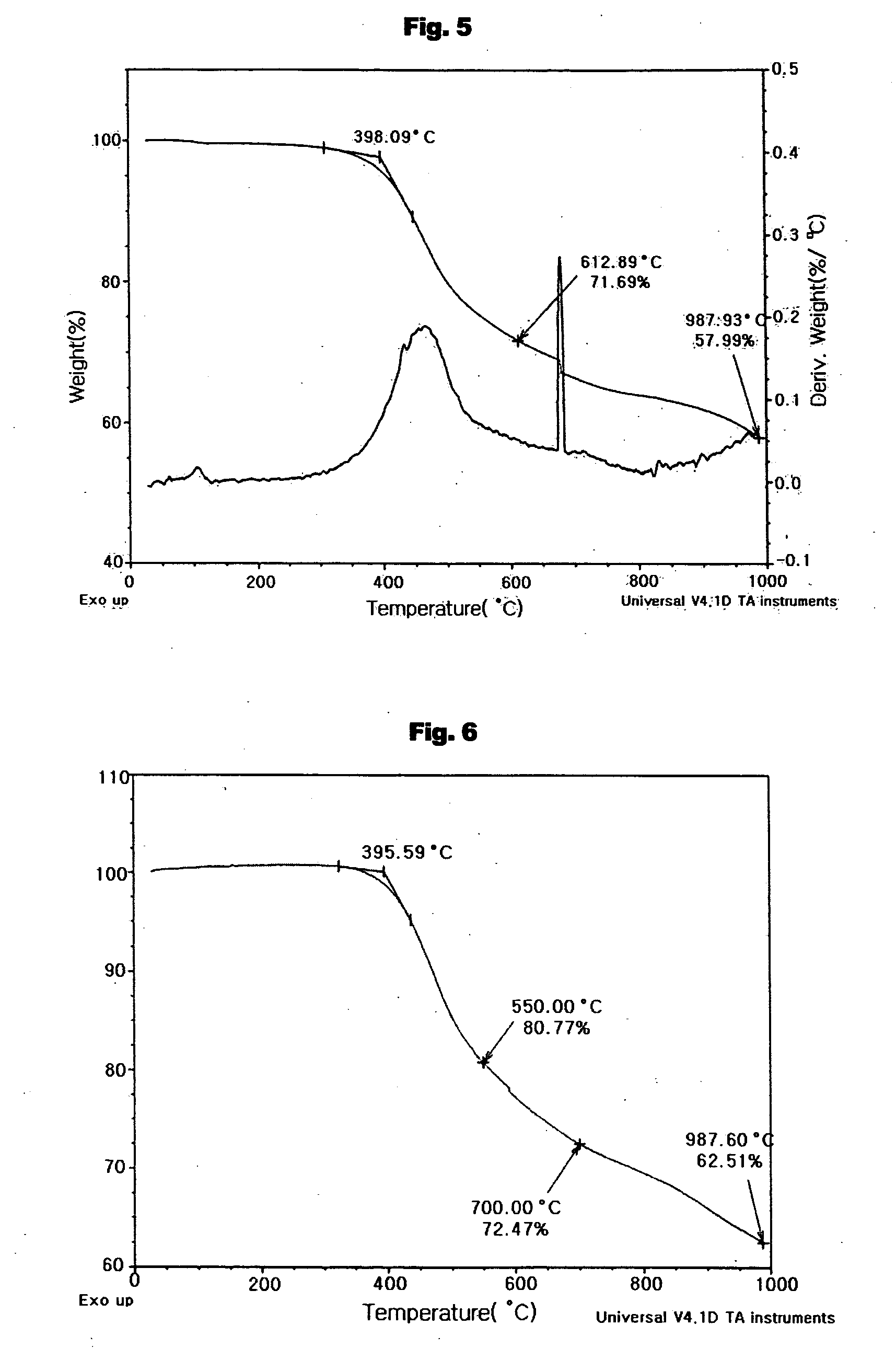Aromatic enediyne derivatives, organic semiconductor thin films using the same and manufacturing methods thereof, and electronic devices incorporating such films
a technology of organic semiconductor and eniyne, which is applied in the direction of thermoelectric devices, sustainable manufacturing/processing, final product manufacturing, etc., can solve the problems of difficulty in forming a generally uniform layer across large areas of substrates, known deficiencies, and expense associated with forming layers of such materials, so as to improve chemical and/or electrical stability, the effect of improving functionality and/or reliability
- Summary
- Abstract
- Description
- Claims
- Application Information
AI Technical Summary
Benefits of technology
Problems solved by technology
Method used
Image
Examples
example 2
PREPARATIVE EXAMPLE 2
Synthesis of Example Aromatic Enediyne Derivative B
[0063]
[0064] 0.25 g (1 mmol) of terthiophene was added to chloroform, and 0.35 g (2.0 mmol) of N-bromosuccinimide was added thereto, thus obtaining dibromide 1b, which was then subjected to Suzuki coupling and desilylation under the same synthetic conditions as in the synthesis of the derivative A, thereby yielding the derivative B. Analysis of the derivative B produced the following NMR data: 1H NMR (300 MHz, CDCl3), δ(ppm) 0.93 (t, 6H, J=7.2 Hz), 1.24-1.67 (m, 12H), 2.51 (t, 4H, J=7.0 Hz), 3.26 (s, 2H), 7.05-7.08 (m, 8H).
example 3
PREPARATIVE EXAMPLE 3
Synthesis of Example Aromatic Enediyne Derivative C
[0065]
[0066] 2,2′-dibromobithiophene and 2-bromothiophene were subjected to Suzuki coupling, thus obtaining a predetermined or desired product, which was then added with N-bromosuccinimide to prepare dibromotetrathiophene 1c. Subsequently, the compound 1c was subjected to Suzuki coupling and desilylation under the same synthetic conditions as in the synthesis of the derivative A, therefore yielding the derivative C. Analysis of the derivative C produced the following NMR data: 1H NMR (300 MHz, CDCl3), δ(ppm) 0.93 (t, 6H, J=7.2 Hz), 1.24-1.67 (m, 12H), 2.51 (t, 4H, J=7.0 Hz), 3.27 (s, 2H), 7.05-7.09 (m, 10H).
example 4
PREPARATIVE EXAMPLE 4
Synthesis of Example Aromatic Enediyne Derivative D
[0067]
[0068] 1 g (4.2 mmol) of 1,4-dibromobenzene was subjected to Suzuki coupling with 2-bromothiophene, to prepare 0.72 g (3.0 mmol) of a predetermined or desired product, which was then added to chloroform, and 1.1 g (6.2 mmol) of N-bromosuccinimide was added thereto, thus preparing 0.6 g of dibromide 1d. Subsequently, the compound 1d was subjected to Suzuki coupling and desilylation under the same synthetic conditions as in the synthesis of the derivative A, therefore yielding the derivative D. Analysis of the derivative D produced the following NMR data: 1H NMR (300 MHz, CDCl3), δ(ppm) 0.93 (t, 6H, J=7.2Hz), 1.24-1.67 (m, 12H), 2.51 (t, 4H, J=7.0 Hz), 3.27 (s, 2H), 7.01 (s, 2H), 7.13 (d, 2H, J=3.8 Hz), 7.25 (d, 2H, J=3.8 Hz), 7.60 (s, 4H).
PUM
 Login to View More
Login to View More Abstract
Description
Claims
Application Information
 Login to View More
Login to View More - R&D
- Intellectual Property
- Life Sciences
- Materials
- Tech Scout
- Unparalleled Data Quality
- Higher Quality Content
- 60% Fewer Hallucinations
Browse by: Latest US Patents, China's latest patents, Technical Efficacy Thesaurus, Application Domain, Technology Topic, Popular Technical Reports.
© 2025 PatSnap. All rights reserved.Legal|Privacy policy|Modern Slavery Act Transparency Statement|Sitemap|About US| Contact US: help@patsnap.com



